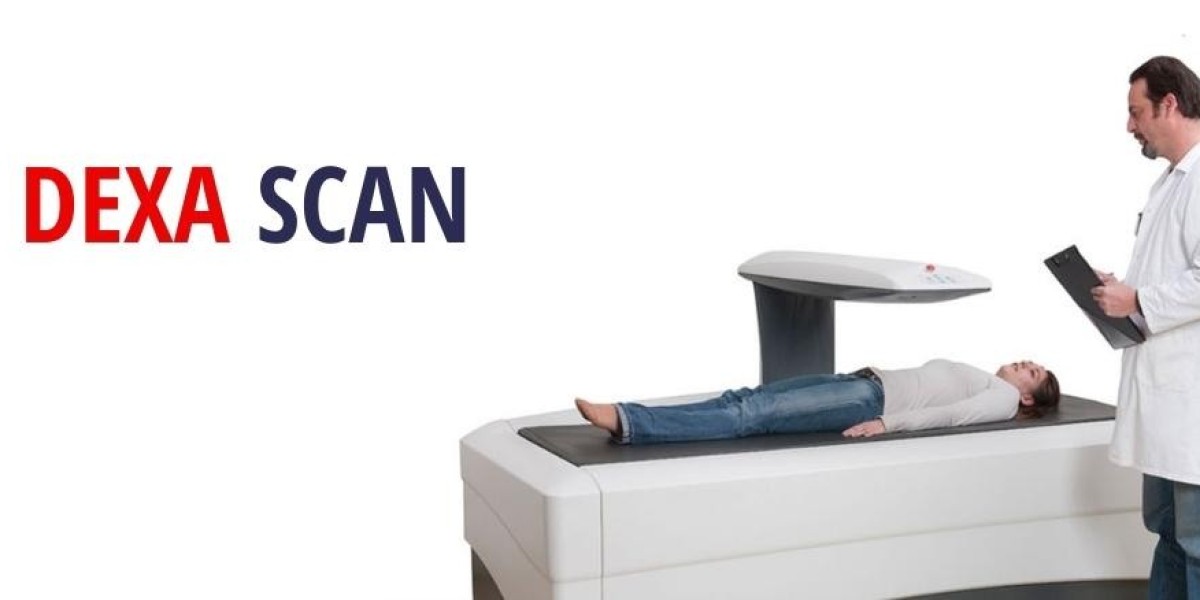Bone health is a critical aspect of overall well-being, but it is often overlooked until problems arise. With osteoporosis and other bone-related conditions becoming more prevalent, especially as we age, keeping track of bone density is essential. The Dexa Scan (Dual-Energy X-ray Absorptiometry) is a medical test that provides a clear picture of your bone health. This article will explain how Dexa scans work, their benefits, and why they are essential for anyone serious about maintaining strong and healthy bones.
What is a Dexa Scan?
A Dexa scan is a non-invasive imaging test that measures bone mineral density (BMD). It uses low-dose X-rays to determine the amount of calcium and other minerals in your bones, particularly in areas prone to fractures, like the hips, spine, and wrists. This test is the most accurate method available for diagnosing osteoporosis, a condition that weakens bones, making them more susceptible to fractures.
Unlike regular X-rays, which are primarily used to visualize bone fractures, a Dexa scan provides a detailed measurement of bone density, allowing doctors to assess the risk of fractures before they occur.
Why is Bone Density Important?
Bone density refers to the amount of mineral matter per square centimeter of bones. Having high bone density typically indicates that your bones are strong and healthy. However, as we age, bone density naturally decreases. Conditions like osteoporosis accelerate this process, leading to brittle bones that break easily.
Maintaining good bone health is crucial to avoid debilitating fractures, especially in older adults. By getting a Dexa scan, you can measure your bone density and take preventive actions to strengthen your bones if needed.
Who Should Get a Dexa Scan?
While anyone can benefit from a Dexa scan, there are certain groups of people who are more at risk for low bone density and should consider regular screening. These include:
- Women over the age of 65: Women are more susceptible to osteoporosis due to the hormonal changes that occur after menopause.
- Men over the age of 70: Although osteoporosis is more common in women, men are also at risk as they age.
- Individuals with a family history of osteoporosis: Genetics play a role in bone health, so if osteoporosis runs in your family, you may be at higher risk.
- People with a history of fractures: If you’ve experienced fractures from minor falls or injuries, it’s essential to check your bone health.
- Individuals with medical conditions that affect bone health: Conditions such as rheumatoid arthritis, hyperthyroidism, or chronic kidney disease can weaken bones.
The Process of a Dexa Scan: What to Expect
A Dexa scan is a quick and painless procedure that typically takes about 10 to 30 minutes. Here’s what to expect during the process:
1. Preparation
There’s very little preparation required for a Dexa scan. You can eat and drink normally before the test, but it’s important to avoid calcium supplements for at least 24 hours beforehand. Wear loose, comfortable clothing without metal zippers or buttons, as metal can interfere with the X-ray images.
2. The Scan
During the scan, you will lie on a padded table, and the Dexa machine will pass over your body, focusing on areas prone to bone loss, such as your hips and spine. The machine uses low-dose X-rays, so the radiation exposure is minimal and far less than a standard chest X-ray. You won’t feel any discomfort during the scan.
3. Results
Your bone density results are given as a T-score, which compares your bone density to that of a healthy young adult. Here’s how to interpret the scores:
- A T-score of -1.0 or higher is considered normal.
- A T-score between -1.0 and -2.5 indicates low bone density, or osteopenia, which is a precursor to osteoporosis.
- A T-score of -2.5 or lower indicates osteoporosis.
Once you receive your results, your doctor will discuss them with you and recommend any necessary lifestyle changes or treatments.
Why Dexa Scans are Essential for Bone Health
1. Early Detection of Osteoporosis
One of the main benefits of a Dexa scan is its ability to detect osteoporosis in its early stages. Often, people don’t realize they have weak bones until they suffer a fracture. Regular Dexa scans help catch bone density loss early, allowing you to take action before significant damage occurs.
2. Preventing Fractures
A significant loss of bone density increases the risk of fractures, which can be life-altering, particularly for older adults. Fractures in the hip or spine can lead to chronic pain, reduced mobility, and loss of independence. Dexa scans provide a clear understanding of your fracture risk, so you can make informed decisions about your health.
3. Monitoring Bone Health Over Time
If you’ve been diagnosed with osteoporosis or osteopenia, regular Dexa scans are essential for monitoring the effectiveness of your treatment. By comparing your current bone density to previous results, your doctor can see whether your bones are getting stronger, staying the same, or continuing to lose density.
4. Personalized Treatment Plans
Based on your Dexa scan results, your doctor can tailor a treatment plan to your specific needs. This might include medications to strengthen bones, dietary changes to increase calcium and vitamin D intake, and weight-bearing exercises to improve bone strength.
How to Improve Bone Health After a Dexa Scan
Once you've had a Dexa scan and received your results, there are several steps you can take to improve or maintain your bone health:
- Increase Calcium and Vitamin D Intake: These nutrients are crucial for bone strength. Foods like dairy products, leafy greens, and fortified cereals are excellent sources of calcium. Vitamin D can be obtained through sun exposure, fatty fish, and supplements.
- Engage in Weight-Bearing Exercises: Activities like walking, jogging, and resistance training help build and maintain bone density.
- Quit Smoking and Limit Alcohol: Smoking and excessive alcohol consumption can contribute to bone loss. Quitting these habits can improve your overall health and protect your bones.
- Consider Medication: If your doctor recommends it, medications such as bisphosphonates can help slow bone loss and improve bone density.
Conclusion: Take Control of Your Bone Health with Dexa Scan Excellence
A Dexa scan is a powerful tool in maintaining and improving bone health. It provides critical insights into your bone density, helping you and your healthcare provider take proactive steps to prevent fractures and combat osteoporosis. By incorporating regular Dexa scans into your healthcare routine, you can take charge of your bone health journey and enjoy a future with stronger, healthier bones.
FAQs
1. How often should I get a Dexa scan?
It depends on your age, risk factors, and bone health. Most doctors recommend getting a Dexa scan every two years if you’re at risk for osteoporosis.
2. Is a Dexa scan painful?
No, a Dexa scan is a painless, non-invasive procedure.
3. Can men get osteoporosis?
Yes, although osteoporosis is more common in women, men can also develop the condition, especially after the age of 70.
4. Is there any radiation risk with a Dexa scan?
The radiation exposure from a Dexa scan is extremely low, much lower than that of a standard chest X-ray.
5. What can I do to improve my bone health if my Dexa scan shows low bone density?
Improving your diet, engaging in weight-bearing exercises, and possibly taking prescribed medications can help strengthen your bones.








